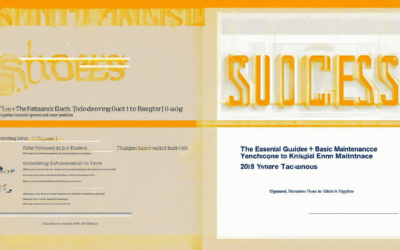A well-crafted seasonal lawn care schedule is essential for maintaining a healthy, vibrant lawn throughout the year. As seasons change, so do the needs of your lawn, making it crucial to adapt your care routine accordingly. Without a structured plan, lawns often face issues like weed invasions, uneven growth, and damage from pests or diseases. A thoughtful and organized seasonal lawn care schedule can prevent these problems, save you time, and ensure your lawn stays lush and green year-round.

What is a good lawn care schedule?
A well-maintained lawn requires consistent care throughout the year. Here’s a breakdown of a comprehensive lawn care schedule tailored to keep your grass healthy and thriving:
- Mowing :
- Cut your lawn every 7-10 days during the growing season (spring through fall).
- Set your mower to the highest setting to avoid bagging too much grass clippings.
- Bag the clippings to prevent clogging your mower and to return nutrients to the soil.
- Sharpen your blades regularly to ensure clean cuts and prevent scalping.
- Fertilizing :
- Apply a slow-release fertilizer in early spring and again in late summer/early fall.
- Follow the dosage recommended on the product label to avoid over-fertilizing.
- Water the lawn immediately after fertilizing to help absorb the nutrients.
- Consider organic options like compost or manure for a natural boost.
- Watering :
- Water deeply once or twice a week, depending on rainfall.
- Avoid overwatering, as it can lead to root rot and waterlogged soil.
- Water in the early morning or late evening to reduce evaporation.
- Check your soil moisture before watering to ensure you’re not wasting water.
- Dethatching :
- Remove dead grass and debris manually or with a rake.
- Use a dethatcher tool if you have a lot of thatch buildup.
- This step helps improve airflow and sunlight penetration to the grass.
- Pest Control :
- Inspect your lawn regularly for signs of pests like weeds, insects, or animals.
- Treat small infestations quickly to prevent them from spreading.
- Use natural methods like insecticidal soap or herbicides if needed.
- Keep your lawn healthy to deter pests naturally.
- Seeding :
- Overseed thin spots in late summer or early fall.
- Choose the right type of grass seed for your climate and soil conditions.
- Water gently after planting to ensure germination.
- Maintain consistent traffic to prevent new seeds from failing to grow.
- Additional Tips :
- Test your lawn care products on a small area first to avoid damage.
- Work with the natural growth cycle of your grass variety.
- Take note of any changes in your lawn’s health and adjust your routine accordingly.
By following this schedule, you’ll have a lush, green lawn that stays healthy year-round. Remember to enjoy the results of your hard work by spending time outside in your beautiful yard!
In what order do you treat your lawn?
Proper lawn care begins with understanding the best sequence of treatments to ensure healthy growth and disease resistance. Here’s a step-by-step guide to treating your lawn effectively:
- Step 1: Dethatch Early Spring
- Step 2: Apply Pre-Emergent Herbicide
- Step 3: Core Aerate Late Spring/Early Summer
- Step 4: Seed or Replicate Grass in Early Fall
- Step 5: Apply Post-Emergent Herbicide in Late Fall
- Step 6: Fertilize Regularly
Dethatching removes dead grass and debris that prevents new grass from growing. This process is most effective in early spring when the soil is still moist but not frozen.
Apply a pre-emergent herbicide in early spring to control weeds before they germinate. This helps maintain a healthier lawn environment.
Core aerating improves soil drainage and root health. This is best done in late spring or early summer when the grass is actively growing.
September or October is ideal for overseeding thin spots or replanting grass. This ensures strong roots and vigorous growth come spring.
Target broadleaf weeds like dandelions and clover with post-emergent herbicides in late fall. This prevents them from spreading next season.
Apply a slow-release fertilizer every 6-8 weeks during the growing season to keep your lawn nutrient-rich and green.
By following this treatment order, you ensure your lawn receives consistent care throughout the year, promoting thick growth and reducing weed competition. Always refer to the product labels for exact application rates and timings.

Understanding the 1/3 Rule in Lawn Care
The 1/3 rule in lawn care is a simple yet effective strategy to maintain healthy grass growth and prevent over-stressing your lawn. Here’s how it works:
- Mow your lawn no more than one-third of its blade length each time.
- This means if your grass is typically 3 inches tall, wait until it reaches approximately 4.5 inches before mowing. This ensures you’re only removing the top third of the grass blades.
- By following this rule, you protect the health of your lawn, preventing stress from excessive trimming and reducing the risk of disease or pest infestation.
- This balanced approach helps maintain your lawn’s appearance while promoting vigorous growth.
Remember, the 1/3 rule is adaptable to your specific needs. Factors like grass type, soil condition, and climate can influence your mowing schedule. Regular monitoring will help you adjust accordingly to keep your lawn thriving year-round.

What Do Most People Charge to Mow a Lawn?
Lawn mowing costs can vary significantly based on several factors, including labor rates, location, lawn size, and additional services.
Pricing Guide
- Hourly Rates: Typically range from $30 to $65 per hour.
- Per Service Charges: Can range from $50 to $250, depending on the scope of work.
- Per Square Foot: Approximately $0.01 to $0.06 per square foot for smaller lawns.
- Per Acre: Larger lawns may cost between $150 to $200 per acre.
Factors Influencing Costs
- Location: Labor costs differ by region; urban areas may be pricier than rural areas.
- Lawn Size: Smaller lawns (e.g., 1/4 acre) cost less than larger ones (e.g., 1 acre).
- Grass Type: Dense or tough grasses may require more time and effort, increasing costs.
- Additional Services: Edging, trimming, and debris removal can add $50 to $100 to the total cost.
Examples
- Small Lawn (1/4 acre): $75 to $125
- Medium Lawn (1/2 acre): $150 to $225
- Large Lawn (1 acre): $300 to $400
Keep in mind that these prices may fluctuate based on the factors listed above. Always request a detailed quote before hiring a professional.
What Do Most Landscapers Charge Per Hour?
Landscapers typically charge between $40 and $100 per hour, depending on several factors:
- Experience Level : More experienced landscapers may charge higher rates due to their expertise and efficiency.
- Location : Costs can vary significantly by geographic location, with urban areas often charging more than rural areas.
- Type of Work : Services like lawn mowing might cost less than landscape design or installation.
- Project Duration : Some landscapers may charge a flat fee for a project rather than an hourly rate.
These rates reflect the average range and can fluctuate based on market demand and competition.

How Much Should I Get Paid for Mowing Lawns?
Your payment for mowing lawns depends on several factors:
1. Location
Hourly rates vary by region. In urban areas, you may charge $25 to $45 per hour, while rural areas might range from $18 to $35 per hour due to differences in labor costs.
2. Lawn Size
Small yards (0.5-1 acre) typically pay $20 to $50 per hour. Larger properties (1-3 acres) may range from $40 to $80 per hour, especially if they include trees, shrubs, and extensive areas.
3. Equipment Used
Push mowers generally cost $15 to $30 per hour, while riding mowers or zero-turn mowers may fetch $40 to $70 per hour. Additional services like trimming ($10-$30 per hour) or edging ($15-$25 per hour) can increase your rate.
4. Job Frequency
One-time jobs for small lawns may range from $100 to $300, while recurring weekly services often cost $25 to $75 per visit. Commercial properties or long-term contracts may pay $300 to $800 per month or more.
5. Competition
Avoid underpricing yourself to stay competitive without losing profitability. Research local rates and set your prices accordingly to attract clients without devaluing your service.
6. Rush Jobs
Charge a premium for urgent jobs, adding $20 to $50 for same-day or next-day service, depending on the urgency and client demand.
7. Personal Costs
Consider your expenses such as fuel, equipment maintenance, and insurance when setting your rates to ensure profitability.
8. Negotiation
Be confident in your pricing but remain open to negotiation within a reasonable range. Establish a minimum rate based on local averages to protect your investment.
9. Marketing and Reputation
Competitive pricing can attract more clients, but ensure your rates reflect the value of your work. A well-maintained reputation and reliable service can justify higher charges.
By considering these factors, you can establish a fair and profitable pricing structure for your lawn mowing services.




0 Comments